Ministry of Rural Development
A New Dawn for Rural India’s Transformation
Union Budget 2025-26 Brings Forward a Package of Hope
प्रविष्टि तिथि:
06 FEB 2025 7:32PM by PIB Delhi
Union Budget 2025-26 Brings Forward a Package of Hope
“Ensuring a dignified life for the people of rural India is the priority of my Government”
~Prime Minister Shri Narendra Modi
India is home to 6.65 lakh villages, with 2.68 lakh Gram Panchayats and Rural Local Bodies, which form the backbone of the nation's rural landscape. These villages, scattered across the country, play a crucial role in shaping India's rural economy and culture. The Union Budget 2025-26 recognizes the importance of these communities and places a strong emphasis on their upliftment. The budget focuses on key areas such as employment generation, women empowerment, education and infrastructure development in rural India.
Total amount allocated for the demand in the Budget Estimate (BE) for 2025-26: ₹1,88,754.53 Cr.
The Union Budget 2025-26 outlines several key initiatives aimed at driving rural development and enhancing prosperity through focused programs and investments:
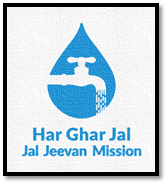
- Water Supply - Jal Jeevan Mission:
The Jal Jeevan Mission has been extended until 2028 with an increased focus on improving the quality of infrastructure and the operation and maintenance of rural piped water supply schemes through a citizen-centric approach, known as "Jan Bhagidhari". The goal is to achieve 100% coverage with enhanced financial support and sustainability through state-specific MoUs.
- Broadband Connectivity - Bharatnet Project:
Broadband connectivity will be expanded under the Bharatnet Project, aiming to provide all government secondary schools and primary health centers in rural areas with internet access, improving education and healthcare services.
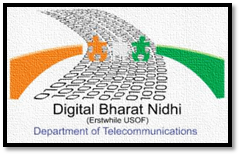
- India Post as a Catalyst for Rural Economy:
India Post will drive rural economic growth with its 1.5 lakh rural post offices, India Post Payment Bank, and 2.4 lakh Dak Sevaks. It will enhance services by offering micro-enterprise credit, digital services, and institutional account management. Furthermore, India Post will evolve into a key public logistics organization supporting entrepreneurs, MSMEs, and self-help groups.
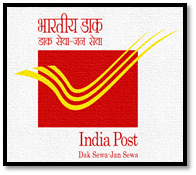
- Rural Prosperity and Resilience Program:
A comprehensive multi-sectoral ‘Rural Prosperity and Resilience’ programme will be launched in collaboration with states. This program aims to address under-employment in agriculture by promoting skill development, technology adoption, and investments to invigorate the rural economy. The mission will focus on empowering rural women, young farmers, marginalized communities, and landless families, ensuring that migration becomes a choice, not a necessity.
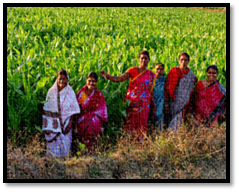
Through these initiatives, the Union Budget 2025-26 envisions a holistic approach to rural development, aiming for long-term growth, resilience, and self-reliance across rural India.
Positive Transformations in Rural India
Positive outcomes have been observed across various sectors as India moves toward greater prosperity. These include an increase in rural wages, wider internet connectivity in rural areas, a decline in poverty, and a reduction in consumption inequality.
- National Multidimensional Poverty Index (MPI) Report: The proportion of individuals living in multidimensional poverty declined from 24.85% to 14.96% between 2015-16 and 2019-21. 13.5 crore individuals escaped multidimensional poverty during this period.
- Rural Internet Connectivity: As of March 2024, India had 954.40 million internet subscribers. Out of this, 398.35 million were rural internet subscribers.
- Income Distribution (Gini Coefficient): For rural areas, it declined from 0.266 in FY22-23 to 0.237 in FY23-24.
- Rural Wage Growth: As per data from the Labour Bureau, rural wages in FY25 (April-September 2024) showed a growth of above 4% each month year-on-year: Agriculture wages grew by 5.7% for men and 7% for women. Non-agricultural wages grew by 5.5% for men and 7.9% for women.
Pathway to Prosperity: Key Rural Scheme Achievements

- Pradhan Mantri Gram Sadak Yojana (PMGSY) – Roads: Launched in December 2000, this initiative aims to provide rural connectivity through a single all-weather road to unconnected habitations of a designated population size in the core network, enhancing the socio-economic conditions of rural communities.
- Pradhan Mantri Awaas Yojana-Gramin (PMAY-G) – Housing: Launched on 20th November 2016, aiming to provide housing for the poorest segments of society.

Mission Amrit Sarovar: Launched on 24th April 2022, with an objective to conserve water for the future. The Mission aimed at developing / rejuvenating 75 Amrit Sarovar (Pond) in each district of the Country. A total of 68,843 ponds have been constructed.

National Rural Health Mission: Launched in 2005 with the objective of building public health systems to provide accessible, affordable and quality health care to the rural population.
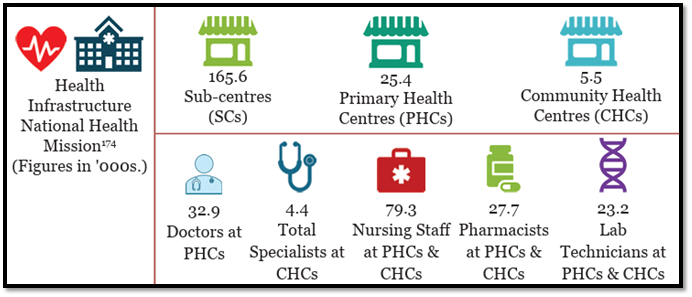
- Jal Jeevan Mission: Launched in 2019, JJM is a nationwide programme designed to provide all households in rural India with safe and adequate drinking-water through individual household tap connections. As of 27 January 2025, a total of 12.2 crore households have been provided with tap water connections.

- Swachh Bharat Mission (Gramin): Launched on October 2, 2014, the initiative aimed at making India Open Defecation Free (ODF). Currently in Phase 2 the focus is on maintaining the ODF status, managing solid and liquid waste by 2024-25 and transitioning all villages from ODF to the ODF Plus model.

Saansad Adarsh Gram Yojana (SAGY): Launched on 11th October 2014, SAGY aims to preserve the essence of rural India by providing access to basic amenities and opportunities for people to shape their own futures.

- Pradhan Mantri Janjati Adivasi Nyaya Maha Abhiyan (PM-JANMAN): Cabinet Approved PM-JANMAN on Nov. 2023 to improve socio-economic conditions of the Particularly Vulnerable Tribal Groups (PVTGs).

- Deendayal Antyodaya Yojana - National Rural Livelihoods Mission (DAY-NRLM): Launched in 2011, the scheme aims to empower rural poor women by organizing them into Self Help Groups (SHGs) and supporting economic activities to improve their income and quality of life. Implemented in 5,369 blocks across 682 districts.
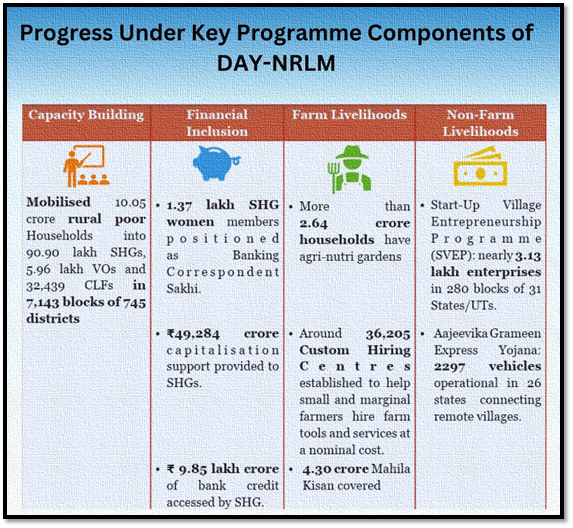
- Gram Nyayalayas Act, 2008: Provide access to justice at the grassroots level in rural areas. As of October 2024, 313 Gram Nyayalayas have disposed of over 2.99 lakh cases between December 2020 and October 2024.

- National Social Assistance Programme (NSAP): Launched on 15th August 1995, Provide financial assistance to vulnerable sections of society.
- Mahatma Gandhi National Rural Employment Guarantee Scheme (MGNREGS) Progress: Launched in 2005, the scheme aims to provide 100 days of guaranteed wage employment annually to rural households, enhancing livelihood security through unskilled manual work. The Budget allocation under Mahatma Gandhi NREGA has steadily risen. The budget allocation for the financial year 2006-07 was Rs 11,300 crore which increased to Rs 33,000 crore in 2013-14 and now stands at Rs 86,000 crore during FY 2024-25 at Budget estimate stage.
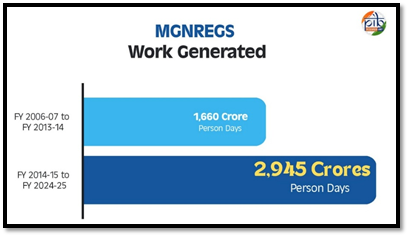
Conclusion
Rural India is making significant strides toward achieving a developed India by 2047, with the Union Budget serving as a key step in making it more self-reliant (Atmanirbhar). By focusing on essential areas like employment, infrastructure, and economic empowerment, the budget ensures crucial support for a prosperous and sustainable future for rural communities, paving the way for a stronger, more self-sufficient India.
References
Click here to see in PDF
Santosh Kumar/ Sarla Meena/ Kamna Lakaria
(रिलीज़ आईडी: 2100410)
आगंतुक पटल : 7503